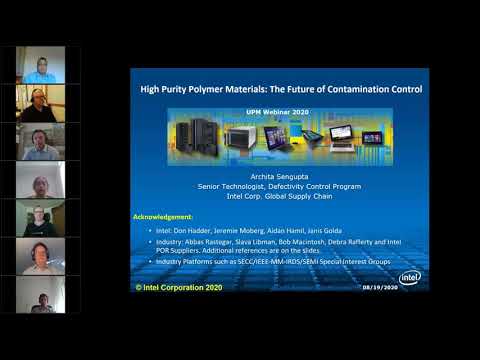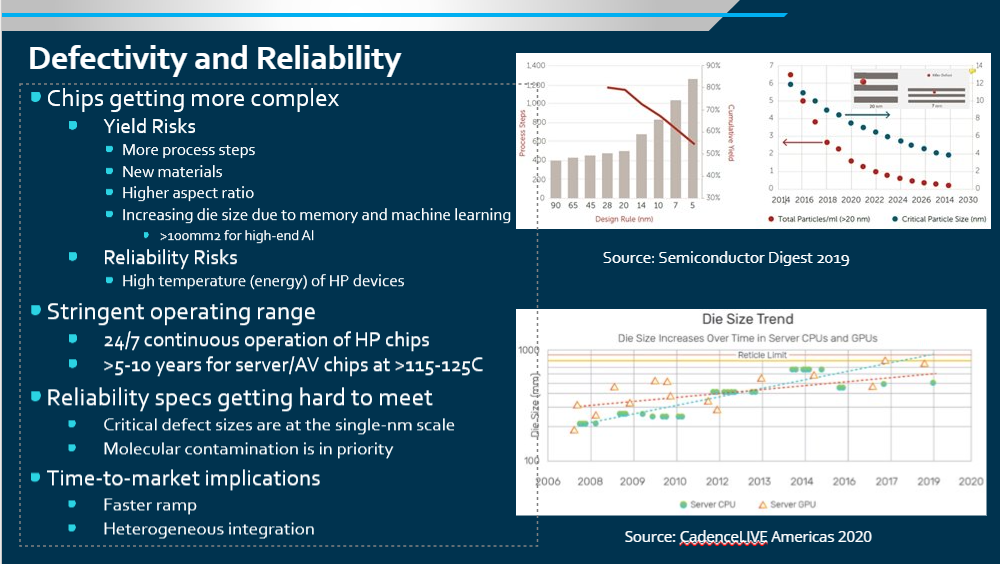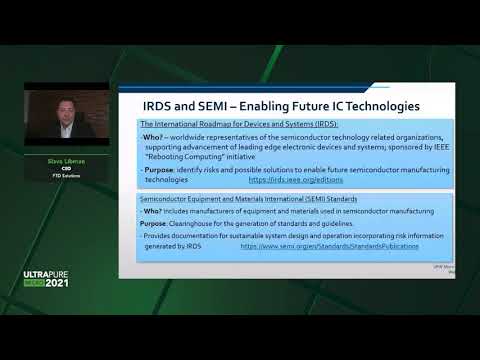
Alice Young
Global Water Intelligence
Collaborators
Tags
IRDS & SEMISEMI StandardsMetrology and Analytical TechnologyProactive Technology Management – Supply Chain in support of Advanced Technology Yields; A Summary
Share this insight
This webinar brought together the perspectives of end-users, high purity polymer material experts, and POU treatment specialists, to present a holistic view of the risks associated with high purity materials and components. The key technology challenges associated with high purity liquid delivery systems were discussed, alongside the potential solutions and proactive strategies for improving material quality and treatment solutions to ensure high manufacturing yield.
Archita Sengupta, Intel, began by revisiting defectivity challenges from the IDM perspective; as the industry rises to the challenge of high yield and long-term reliability, through advancements such as new materials, shrinking size features and complex chemistries, new defect sources emerge. The industry is therefore being forced to redefine on-wafer defect sensitivity and tolerance. To create an economically viable model for such new developments, the whole supply chain must support proactive technology management to detect, understand and eliminate defect sources. Archita explains that we must map the defect sources upstream in order to understand the sequential mitigation path for defects.
Bob McIntosh, Enviro Energy Solutions, then highlighted the work being done in the industry to bridge the gaps, which can be defined by comparing the current state of technology (via SEMI Standards) and the future requirements (via the IRDS roadmap). Bob’s presentation strongly supported Archita’s perspective, ending with a call to action to improve the quality of materials and components, promoting the creation of a robust QA/QC system throughout the entire supply chain.
Rushi Matkar, Intel, directed his first question on the cleanliness of high purity materials to Archita. Archita strongly promoted the need for a better understanding of chemical handling, delivery systems, parts and O-rings, all of which can cause contamination through leaching with components. As the industry develops, and contaminants emerge, there is a need to add to SEMI Standard C90, to include more metals and more components. Alan Knapp, Evoqua, helped us understand the limitations within the supply chain, which causes these issues to occur. He highlighted the RODI system, telling us that mixed beds are typically relied upon to maintain final water quality. However, these are also contributors of contaminants. Alan suggests we should utilize additional technology upstream of mixed beds – for example, second pass RO, CDI - to steady the state of water quality touching components.
Ashutosh Bhabhe, Entegris, highlighted transport and storage as two neglected areas when it comes to contamination control; the ideal situation is to have everyone thinking about contamination control, in all areas, at all times, and doing so proactively. Saying this, maintaining quality control across all measurable parameters is an impossible task, and so we should think about the key parameters which govern final quality of the material. This will require collaboration across the entire supply chain to educate everyone on the requirements of the semiconductor industry. Jochen Ruth, Pall, was able to support this point, highlighting their collaboration with customers who require specific cleaning recipes to provide their customers with the reliability and cleanliness that they require.
Talking further about the gap in metrology, Ashutosh explained that whilst metrology is a key enabler, it is also the biggest challenge the industry is currently facing. To move forward we must look to hybrid metrology. Hybrid metrology is the combination of physical information, chemical information, on-wafer data, defects characterization, and applying expertise in applications, interactions, mechanisms and prevention to connect all the dots. This is a proactive approach towards understanding the source of defects, helping us prevent them as early as possible. Jochen broadened this idea by talking about the capabilities of filters, as a “last line of defense” expert. He noted that if we are able to find the origin of precursors, then filters can be tailored to address specific issues.
The webinar ended by looking at challenges posed by SEMI F104, being used to define the material cleanliness of valves, as the work done by the SEMI taskforce showed a high risk of particle formation at the tool chambers. Ashutosh and Alan both discussed the complex challenge posed by valves, as they are governed by overall design, actual usage and cleanliness. The SEMI standard provides a key enabling role as a focused target for the industry, and as Ashutosh believes, should even be expanded to focus outside of UPW on other chemistries. If you’d like to hear the full discussion, please visit the webinars page, where you can watch a full webinar recording. With thanks to Slava Libman, FTD Solutions, Rushi Matkar, Intel, Archita Sengupta, Intel, Bob McIntosh, Enviro-Energy Solutions, Ashutosh Bhabhe, Entegris, Alan Knapp, Evoqua, and Jochen Ruth, Pall, for their time and contributions to this webinar.
Share this insight
Related insights
Who gave the best presentations in UPM 2022?

Orla McCoy
Global Water Intelligence
Expert Q&A – Driving Yield and Reliability Solutions in the Semiconductor Industry

Orla McCoy
Global Water Intelligence
Year-in-review: UPM Community Events 2022

Orla McCoy
Global Water Intelligence
Related resources

Proactive Technology Management - Supply Chain in Support of Advanced Technology Yields
Device Yield and Reliability: Exploring Solutions for the Semiconductor Industry

Keynote Panel: Yield and Reliability- Enabling Advanced Semiconductor Yield
